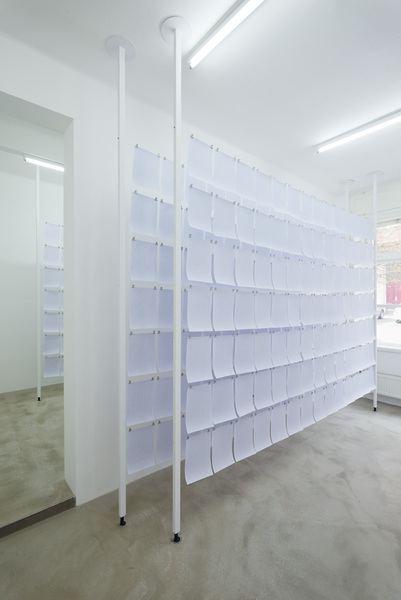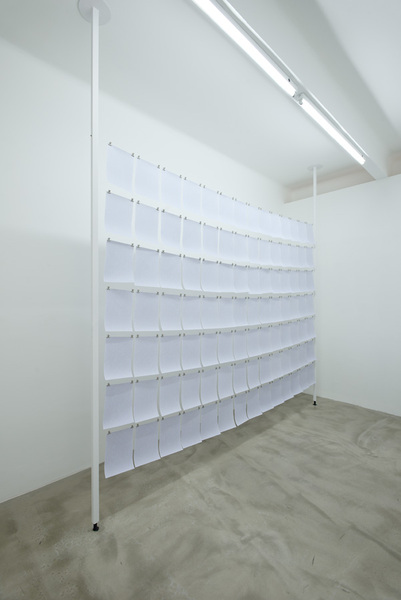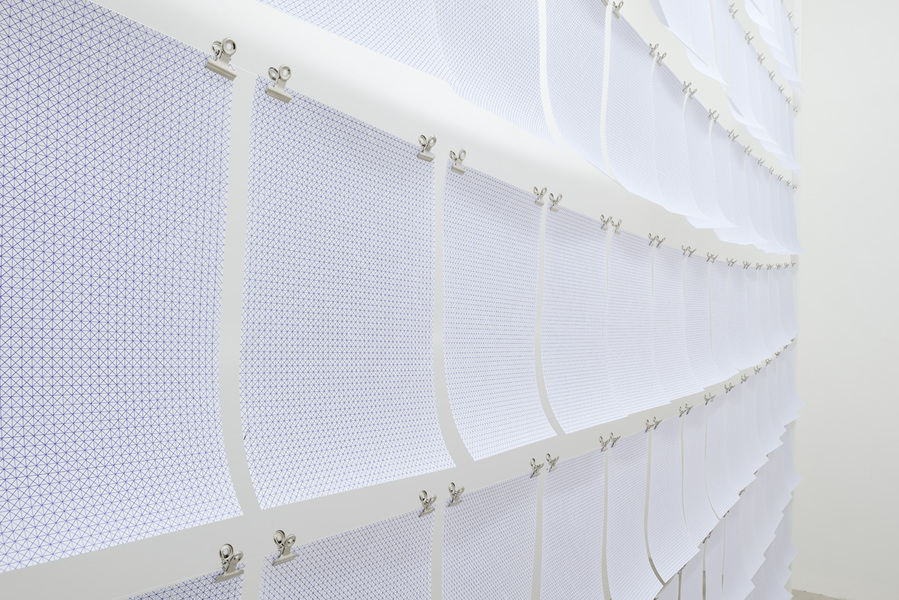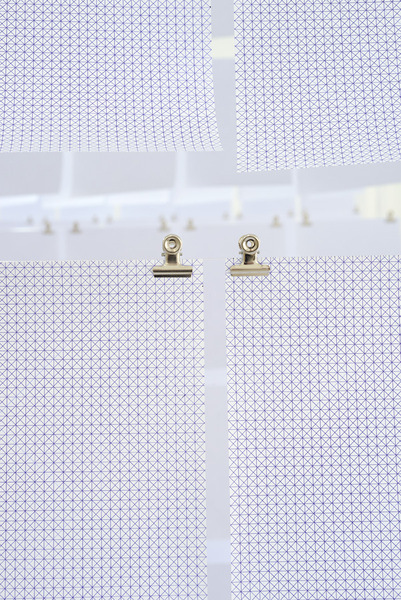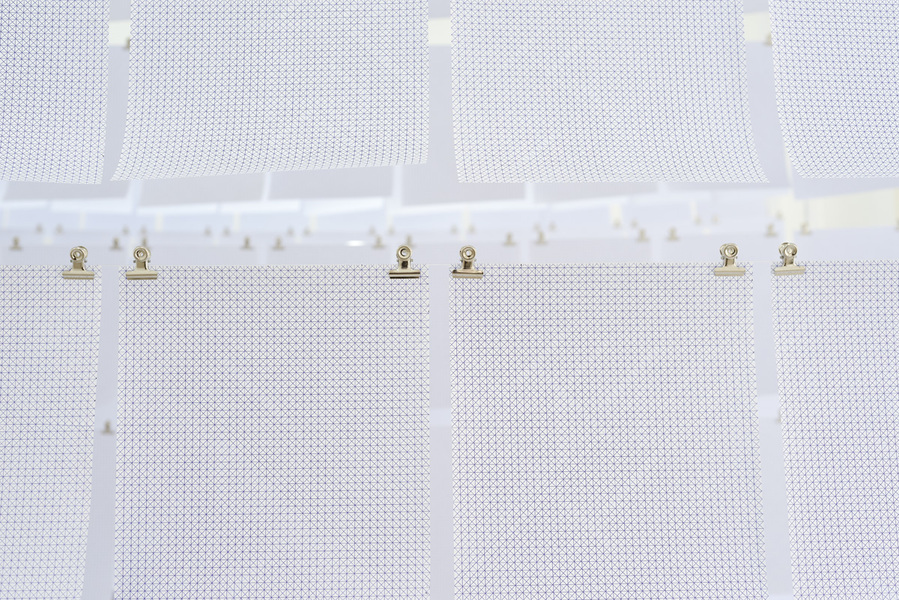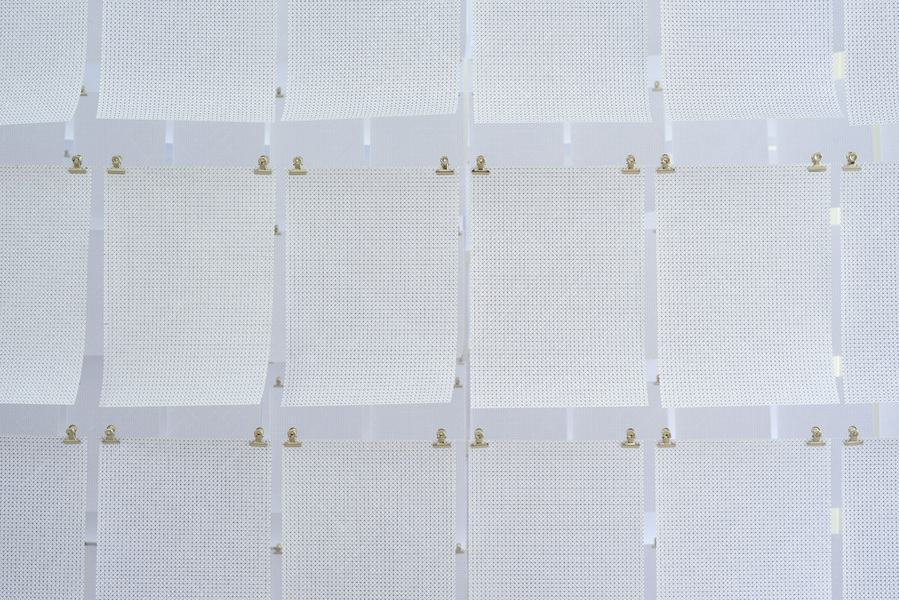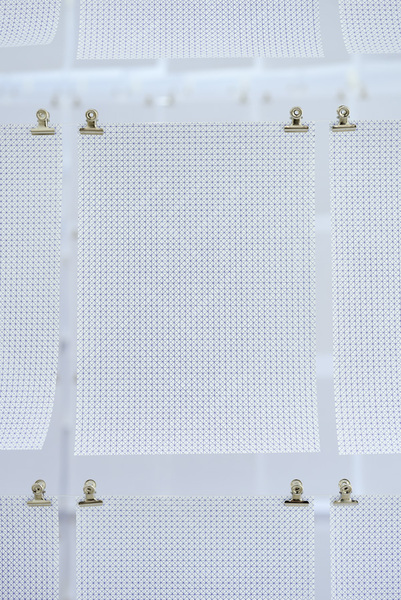The title of Jan Nálevka’s exhibition apparently alludes to “something” that has already been said. The artist wants us to rake our memory to see whether we know what has been added before. It is for the first time that he vehemently points out the presence of similar aspects in his works while publicly polemicizing with the obsessive quality of his creative activities. As I Added Before follows up the programme series of Nálevka’s drawings on paper, systematically exploring the phenomenon of “standardized emptiness”. It includes five hundred more drawings the number and size of which correspond to those of a commonly available pack of office paper. This time, too, Nálevka has used ordinary blue pens with the aim of minimizing his authorial style as a means of expression. Nálevka’s observation that “the exact order has been disturbed by the human factor; although all of the drawings are identical, each of them represents an original due to its little imperfections” primarily states a by-product of the deficiency of the selected method rather than a desired effect.
Since 2009, Jan Nálevka has been drawing the same things on white paper of the A4 format that usually correspond to its standard prints. By means of his interventions, he merely shifts paper from one type of unfilled surface to another type of unfilled surface. In his exhibition I would also like to add that… in the Atrium of the Pražák Palace of the Moravian Gallery in Brno, he has covered the walls from the ceiling to the floor with framed drawings of the square grid of common squared paper. In his series We Can Lose Everything but Not Time (2010), he has only drawn horizontal lines for a “future” text for a change. On the sheets of two packs of paper made for the exhibition Other Rooms, Other Voices, the slight difference in the size of European and American paper has also played a role besides the square grid. In his exhibition As I Added Before, Nálevka goes one step further from articulating a ready-made utilitarian structure to filling it in. Although the result should be again that of an absence, this time, the absence is not that of an ambivalence of factual drawing / symbolic absence of a “record” but rather the absence of the possibility of making (albeit hypothetic) use of the paper. This is achieved by additionally crossing out each field of the square grid. However, as for that, Nálevka has added something before as well; in 2007 – 2008, he has eliminated the possibility of further using / writing in three of his “lined” notebooks in a similar way (Sometimes It Hurts).
In this partial excursion to the history of Nálevka’s “works on paper”, I am trying to introduce the spectrum of tasks alluded to by the title of the exhibition in Drdova Gallery. Just like the time-consuming and physically demanding process of creating a single series means the routine repetition of the same acts and movement patterns, Nálevka’s new exhibition, too, represents an amplified expression of cyclicity; repeating and returning. In general, Jan Nálevka’s drawings are characteristic of the conflict between the process of manual production and the fact that the result can be substituted for a product of machine production. Besides a reflection of the very phenomenon of the working process (methodical and systematic character, adherence to certain commissions, etc.), substituting an efficient, perfect machine for a slower and erring human individual can be understood at least on two levels of meaning; firstly, it fulfils the conventional demand for an artwork to be a result of an original hand-crafted activity, and secondly, as a meaningless substitute, it can point out the thin division line between artistic creativity and pathological mental processes. One could speculate that it is by his very emphasis on the necessity to perceive the new series of drawings together with the preceding series that Nálevka alludes to this boundary. Filling in “emptiness” so many times could allude to the metaphor of leaving the “vicious circle” of graphomania; the last step necessary for a mental and physical release.
For a second decade, Jan Nálevka has been dealing with systems and their systematic filling. In his process of system selection, he always takes into consideration whether it would lead to the creation of reduced “minimalist” visuality. In this respect, too, the filling in of drawings in his series As I Added Before represents a solution of the last alternative available for the given system.
Jiří Ptáček
2012-13, drawing by blue pen on A4 office paper, 500 sheets
All of the sheets in the pack of office paper have been manually lined so that the result is as little distinguishable from standard printed squared paper as possible. Subsequently, all of the squares in the grid have been crossed out diagonally by another square grid. The squared paper can still be perceived as empty, as the squares are a mere utilitarian structure determining the way of their possible further filling. However, by covering them by another square grid in the angle of 45°, the empty space of each of the squares has been factually crossed out, and thus the utilitarian value of the original grid, which cannot be filled in anymore, has been destroyed. Only now is the paper really empty. The exact order has been disturbed by the human factor; although all of the drawings are identical, each of them represents an original due to its little imperfections. The blue pen, the most ordinary office tool, has become the drawing material. The drawings have been installed in space so that the square structure of each of them continues that of the others. In this way, they have become a single spatiotemporal drawing taking up the space of the gallery; an open geometric structure which can theoretically continue ad infinitum.
artist’s text



